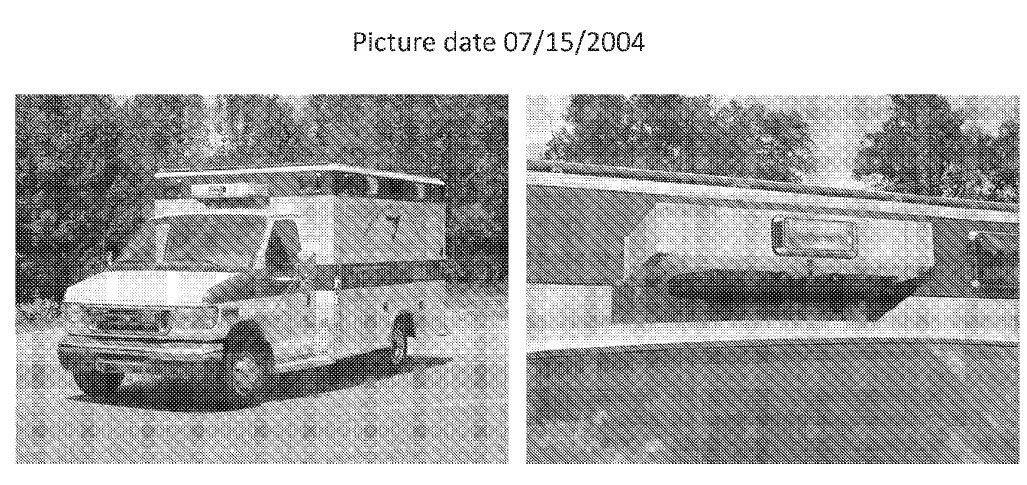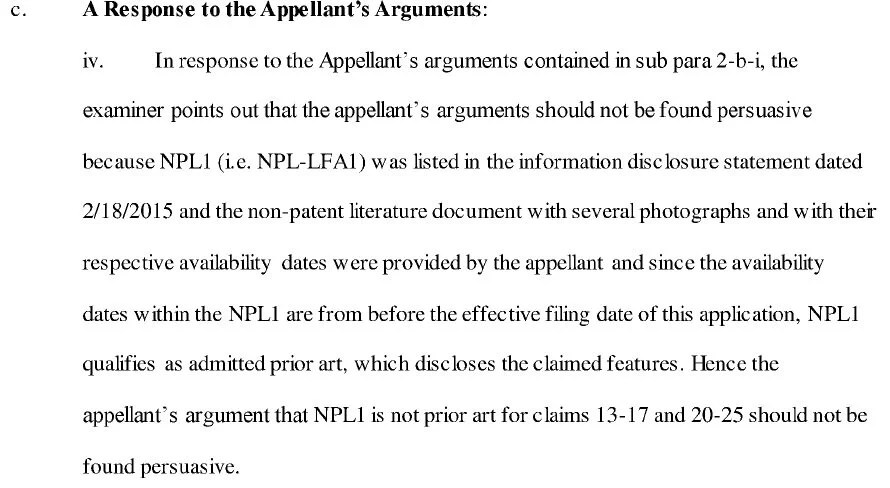As discussed in some past posts (here), examiners sometimes use Applicant Admitted Prior Art (AAPA) in rejections. While there are certainly strategies to avoid improperly admitting something is prior art when it is not, some examiners can be very keen on finding and using anything close to an admission against the applicant.
Here, we see an example where an applicant’s duty to disclose information to the USPTO is being used by the examiner against the applicant to somehow shift the burden of proof. As an initial matter, it is clear that merely disclosing information to the USPTO should not be taken as an admission. From the MPEP, “listing of a reference in an information disclosure statement is not taken as an admission that the reference is prior art against the claims.” MPEP § 2129(IV).
Turning now to an example case (14/531,047), it relates to external automotive condensers and light assemblies for emergency vehicles. Claim 1 is reproduced below:
An external automotive air-conditioning condenser comprising:
a condenser housing having a top portion defining at least one top opening and a bottom portion defining at least one bottom opening,
wherein each of said top opening and said bottom opening is configured to permit air to flow substantially vertically through said external automotive air-conditioning condenser,
wherein said condenser housing includes a substantially solid front face extending from the top portion to the bottom portion so as to permit at least one warning light to be affixed thereto, and wherein said condenser housing is configured to face a direction of travel of the vehicle,
wherein said condenser housing includes a right face extending rearward from the front face and forming an obtuse interior angle with respect to the front face, wherein said condenser housing includes a left face extending rearward from the front face and forming an obtuse interior angle with respect to the front face; and
at least one warning light affixed to an exterior of each of the front face, the right face, and the left face.
The applicant filed an IDS with photographs of a vehicle with typed dates, where the photographs and dates were provided to the applicant by a third party. In order to meet the duty of disclosure, the applicant then submitted the photographs and the typed dates to the USPTO. Portions of the IDS from PAIR are reproduced below, along with some of the submitted photographs and typed dates:


It is clear that the form requires the applicant to include certain information, such as a date. However, the form does not require the applicant to admit that such date has been established. Further, the applicant even made clear that the submission was an “alleged” disclosure.
Nevertheless, the Examiner (and two supervisors) argued that this was indeed an admission by the applicant, regardless of what the MPEP states:

Further, the examiner argued that the applicant has the burden of proof to prove that the dates are inaccurate or that NPL was not publicly available on the provided dates. The applicant then appealed to the PTAB, which made short order of this rejection (internal citations omitted):
Here, the Examiner does not identify any section of pre-AIA 35 U.S.C. § 102 that justifies treating NPL-LFA1 as prior art. The role of the Patent Trial and Appeal Board is to review adverse decisions of Examiners. Although the Board has authority to enter new grounds of rejection in appropriate cases (37 C.F.R. § 41.50(b)), the Board typically does not attempt to establish, independently of the Examiner, a factual underpinning on which to conclude that the subject matter of a claim would have been obvious. In particular, the Board does not engage independently in the fact-finding necessary to establish that disputed references are prior art.
There was a second issue on appeal related to another non-patent literature document that the examiner argued corroborated the above pictures, but the examiner’s logic was flawed there as well since that reference was for a different system.
So, not only be careful to avoid unnecessary admissions, but also do not let examiners improperly take your disclosures in an IDS as an admission.

Leave a comment